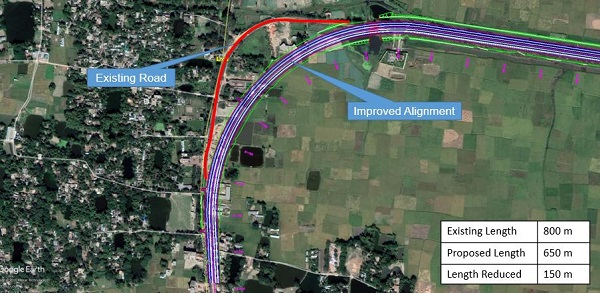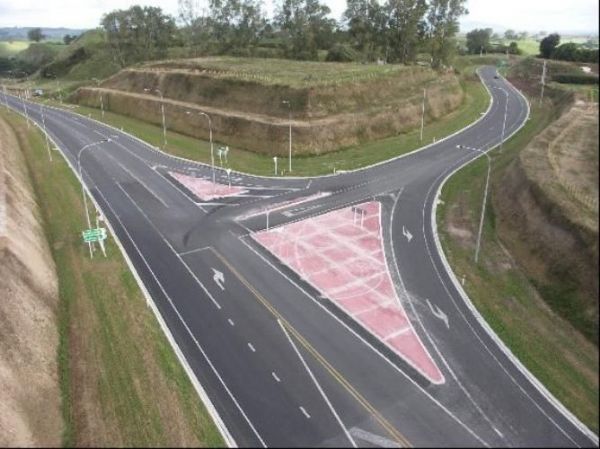





Realignment - Horizontal
Reduced risk of head-on crashes. Reduced risk of run-off-road crashes. Better traffic flow.
Road realignment is costly and time consuming because it usually involves rebuilding a section of road. Horizontal curve realignments require considerable design and construction effort. These projects may also require the purchase of land. Horizontal realignments often include lane widening, shoulder improvement, and delineation treatments. Increased speed with sections of realignment can lead to safety issues at the interface with the existing road. In general, the transition area should not be located at an area of poor visibility. Drivers should be alerted to reduce speed and adapt to the existing road of lower alignment standard. Realignment can have significant environmental impacts due to increased footprints and earthworks Realignment can release sections of the existing road for other beneficial purposes.
Treatment Summary
25-40% |
Case Studies
Related Images

Poor horizontal alignment in Kenya. Image credit: iRAP 
Example of a planned realignment of the road in Bangladesh. Image credit: Roads and Highways Department 
Example of a planned realignment of the road in Bangladesh. Image credit: Roads and Highways Department 
An upgraded intersection with protected turn lane, involving horizontal and vertical realignment. Image credit: ARRB Group










